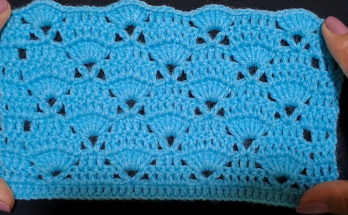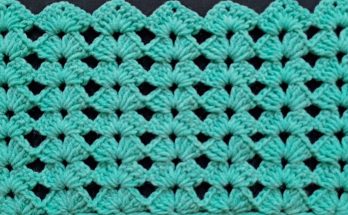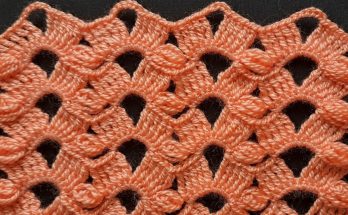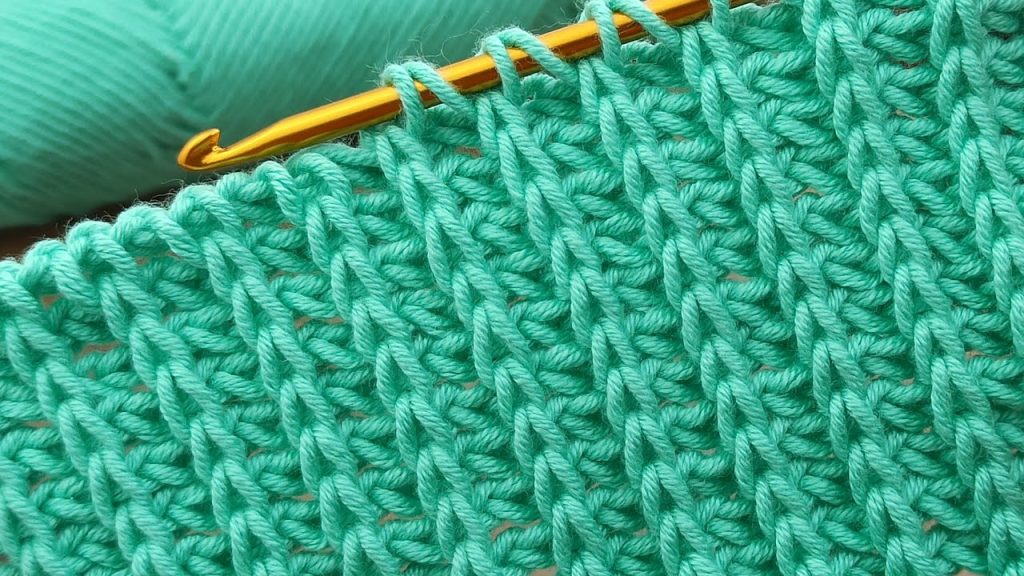
✨ Introduction: Discovering the Depth of Tunisian Crochet
Welcome, crochet enthusiasts! If you’ve been looking for a stitch that offers the dense, woven look of knitting but with the ease and speed of crochet, you’ve found it! The gorgeous fabric in the image you shared is a perfect example of Tunisian Crochet, sometimes called “knooking” or Afghan crochet. It creates a thick, warm, and stable fabric that’s ideal for everything from cozy blankets to stylish accessories.
This pattern will guide you through creating a chic, ribbed scarf using the fundamental Tunisian Simple Stitch (TSS). We’ll focus on getting that beautiful, vertical texture. It’s a great beginner-friendly introduction to Tunisian Crochet, and the result is a sophisticated scarf that will keep you warm all season long.
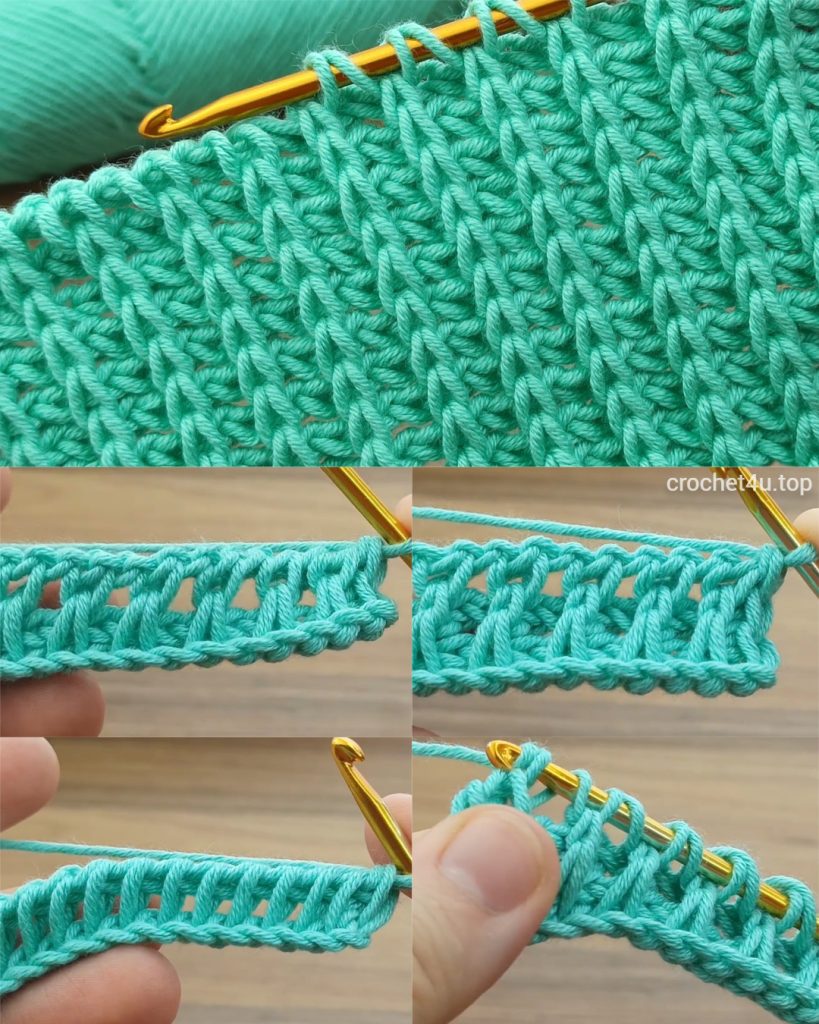
📋 Materials You’ll Need
Getting started is easy! Tunisian Crochet requires a special tool, but the rest of the supplies are standard.
- Yarn: Approximately 400-450 yards of a Worsted Weight (Category 4) acrylic or cotton blend yarn. The vibrant color in the image is a beautiful choice, so pick your favorite solid shade!
- Hook: A Tunisian/Afghan Crochet Hook size J/10 (6.0 mm). Make sure your hook has a long shaft or a cable attached, as you’ll be holding many loops on it.
- Note on Hook Size: For Tunisian crochet, it’s common to use a hook size 1-2 sizes larger than what the yarn label recommends. This helps keep the tension loose enough for the fabric to drape nicely and not curl too much.
- Scissors
- Tapestry Needle (for weaving in ends)
📐 Gauge and Finished Size
While gauge isn’t as critical for a scarf as it is for a garment, getting close to this will ensure you have a project of a similar size and drape.
- Gauge: 16 stitches (TSS) and 12 rows = 4 inches (10 cm) square, blocked.
- Finished Scarf Size: Approximately 8 inches wide by 60 inches long (20 cm x 152 cm). You can easily adjust the length and width by changing your starting chain and the number of rows.
📝 Key Tunisian Crochet Abbreviations (US Terms)
It’s important to understand the terminology unique to this craft. A Tunisian row is always made up of two parts: a Forward Pass and a Return Pass.
| Abbreviation | Meaning |
| ch | Chain |
| st(s) | Stitch(es) |
| YO | Yarn Over |
| FP | Forward Pass (picking up loops) |
| RP | Return Pass (working off loops) |
| TSS | Tunisian Simple Stitch |
| TLS | Tunisian Last Stitch (often worked as a simplified bind-off for a clean edge) |
📖 The Stitch Tutorial: Tunisian Simple Stitch (TSS)
Before we start the pattern, let’s break down the main stitch.
- Foundation Chain: Chain the number of stitches you want for your width.
- Forward Pass (FP) – Row 1:
- Skip the first chain next to the hook.
- Insert your hook into the back bump of the next chain.
- YO and pull a loop through (you now have two loops on your hook).
- Repeat this across the entire chain. Do NOT work off any loops yet. When you reach the end, you should have the same number of loops on your hook as your starting chain.
- Return Pass (RP) – Row 1:
- YO and pull through one loop (this creates the chain edge, like a turning chain).
- YO and pull through two loops on the hook.
- Repeat “YO, pull through two loops” all the way across until only one loop remains on your hook. This single loop counts as the first stitch of the next row.
- Forward Pass (FP) – Subsequent Rows (TSS):
- Skip the first vertical bar (which is the loop already on your hook).
- Insert your hook between the front and back of the vertical bar of the next stitch.
- YO and pull a loop through.
- Repeat this insertion and loop-pulling action all the way across the row.
- Return Pass (RP) – Subsequent Rows:
- Repeat the standard Return Pass as described in Step 3 (YO, pull through 1; then YO, pull through 2 across).

🧣 Scarf Pattern Instructions
We’ll be working entirely in the TSS, which creates that lovely, tight, woven fabric seen in the image.
Step 1: Starting the Foundation
- Ch 30 (or any odd number for your desired width). The 30 chains will give you a width of about 8 inches.
- Work the Foundation Row FP as described in the TSS tutorial (Step 2 above), picking up 30 loops (including the one on your hook).
- Work the Foundation Row RP as described in the TSS tutorial (Step 3 above), until only one loop remains.
Step 2: Working the Body of the Scarf
- Row 2 FP: Work the Tunisian Simple Stitch (TSS) across the row, as described in the TSS tutorial (Step 4 above).
- Important Last Stitch: For a cleaner, non-curling edge, your last stitch should be worked differently. Instead of just inserting into the single vertical bar of the last stitch, insert your hook under both the front and back vertical loops on the edge. YO and pull up a loop. You will have 30 loops on your hook.
- Row 2 RP: Work the standard Return Pass as before.
- Repeat Rows 2 FP and 2 RP until your scarf reaches your desired length, or until you’ve used most of your yarn (approximately 60 inches / 152 cm).

Step 3: Binding Off
This final step is crucial to prevent the scarf from unraveling and to create a nice, finished edge.
- Work a final Forward Pass in Tunisian Simple Stitch (TSS) across the row, but instead of leaving the loops on the hook, bind them off as you go:
- Insert hook into the next vertical bar (as if to TSS).
- YO and pull a loop through the stitch AND through the loop already on your hook. This is essentially a slip stitch bind-off.
- Continue this slip stitch bind-off across the entire row, making sure to insert the last stitch into both vertical loops for a tidy edge.
- When you reach the end, cut the yarn, leaving a 6-inch tail. Pull the tail completely through the last loop to secure the bind-off.
Video Tutorial:
🧺 Finishing and Care
- Weave in Ends: Use your tapestry needle to securely weave in any yarn tails into the back of your fabric.
- Blocking (Highly Recommended): Tunisian crochet, especially TSS, has a tendency to curl. Wet blocking (soaking the item and then pinning it to a mat to dry) will dramatically reduce or eliminate this curl, enhance the stitch definition, and improve the drape of your finished scarf.
- Care: Follow the washing instructions for your specific yarn type. For most acrylic/cotton blends, machine wash gentle and lay flat to dry.
Congratulations! You’ve completed a beautifully textured Aqua Rib Tunisian Crochet Scarf! The thick, woven pattern is sure to be a favorite.

